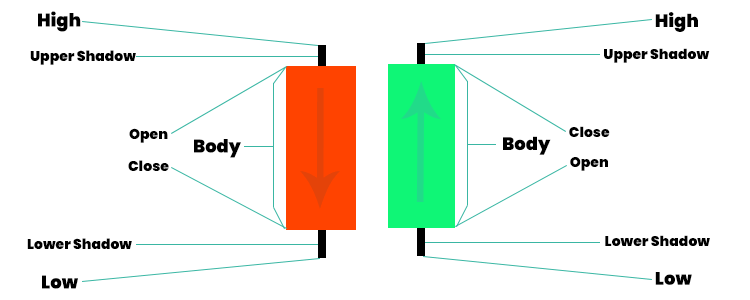
Advanced Cheat Sheet Candlestick Patterns Insights
Candlestick patterns are a fundamental part of technical analysis in the world of trading and investing. Originating from Japan over 200 years ago, they have become a popular tool for traders and investors globally.
These patterns are formed by the price movements of securities on a chart and are typically used to predict future market behavior based on historical trends.
We will also cover advanced cheat sheet candlestick patterns.
In this detailed exploration, we will delve into the role and importance of candlestick patterns, their history, common types, and how they are used in trading strategies.
History and development
Candlestick charts first appeared in Japan in the 18th century. A legendary rice trader named Munehisa Homma is credited with their development. Homma realized that while there is a link between the supply and demand of rice, the emotions of traders also played a critical role. The visual representation of price movements in the form of candlestick patterns made it easier to spot trends and reversals in the rice market.
Anatomy of a candlestick
A candlestick comprises three parts: the body, and two wicks, or shadows, at the top and bottom. The body represents the open and close prices, while the wicks show the high and low prices during that time period. A candlestick can be bullish (indicating a price increase) or bearish (indicating price decrease).
Importance of candlestick patterns

Now, let’s learn more about the importance of candlestick patterns.
Market sentiment analysis: Candlestick patterns reflect the psychology of the market, providing insights into the sentiment of traders. This psychological aspect is crucial in understanding market movements.
Price prediction: While not always accurate, these patterns help predict possible future price movements based on past patterns.
Entry and exit points: Traders use candlestick patterns to determine potential entry and exit points for trades, aiming to optimize their profitability.
Risk management: Understanding these patterns aids in managing risk, as they can indicate potential trend reversals or continuations.
Common candlestick patterns
What about the most common candlestick patterns?
Single candlestick patterns: These include doji (indicating indecision), hammer (a potential bullish reversal), and shooting star (a potential bearish reversal).
Two-candlestick Patterns: Examples include, a bullish engulfing pattern, a bearish engulfing pattern (indicating trend reversals), and Tweezer Tops and Bottoms (suggesting a halt in momentum).
Three-candlestick Patterns: These include morning star (bullish reversal) and evening star (bearish reversal).
Interpreting candlestick patterns

The interpretation of candlestick patterns is subjective and depends on the context of the market. For instance, a bullish engulfing pattern in a downtrend might suggest a potential reversal. However, the same pattern in an uptrend might not be as significant.
Candlestick patterns in different time frames
Candlestick patterns can be observed in various time frames, from minutes to months. Short-term traders might focus on minute or hourly patterns, while long-term investors might consider daily, weekly, or monthly patterns.
Limitations and challenges
Subjectivity: The interpretation of candlestick patterns can be subjective and varies among traders.
False signals: Not all patterns lead to the expected outcomes; hence, there’s a risk of false signals.
Need for confirmation: It’s often advised to seek confirmation from other technical indicators or chart patterns before making a trade based on a candlestick pattern.
Integrating candlestick patterns with other analysis methods
To increase reliability, traders often use candlestick patterns in conjunction with other forms of technical analysis, such as trend lines, moving averages, and volume indicators.
Role of advanced cheat sheet candlestick patterns

Are you familiar with advanced cheat sheet candlestick patterns?
Without a doubt, advanced cheat sheet candlestick patterns play an important role.
Efficient reference tool: These cheat sheets offer a quick, accessible guide to various chart patterns, indicators, and concepts in technical analysis. This is particularly useful in trading environments where time is of the essence and rapid decisions are crucial.
Improving pattern recognition skills: A significant aspect of trading is the ability to discern patterns within price charts and market data. Cheat sheets aid in honing this skill, thereby improving your capability to identify potential trading opportunities and market trends.
Minimizing trading errors: In the realm of trading, errors can be expensive. A visual representation of patterns on your cheat sheet can assist in preventing the misidentification of patterns and making misguided trading decisions due to insufficient information.
Maintaining analytical consistency: For trading patterns to be effective, they often need to meet certain criteria. Cheat sheets serve as a constant reminder of these critical elements, ensuring that your analysis remains consistent.
Boosting trading confidence: Confidence in trading stems from a deep understanding and accumulated experience. Having a cheat sheet readily available can reinforce your confidence by offering tangible aid to support your decision-making in trades.
In summary, candlestick patterns are a vital tool in a trader’s arsenal, offering insights into market psychology and potential future price movements. Their historical significance and continued relevance underscore their importance in the world of trading and investing.
However, it’s crucial to use them judiciously and in combination with other tools for a more comprehensive market analysis. By understanding and applying candlestick patterns effectively, traders can make more informed decisions, manage risks better, and potentially increase their chances of success in the markets.
The post Advanced Cheat Sheet Candlestick Patterns Insights appeared first on FinanceBrokerage.
